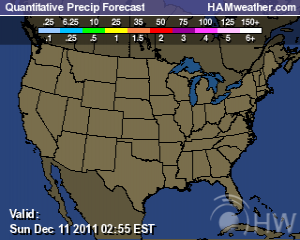Radiation Contamination Leaves Fukushima Schools Unable to Drain Pool Water
An educator checks the state of contaminated pool water at Watari Elementary School in Fukushima on Aug. 4, 2011. (Mainichi
Many schools in Fukushima Prefecture are at a loss over what do to with their swimming pools, which can’t be used or drained because the water is tainted with radioactive materials from the Fukushima No. 1 Nuclear Power Plant, it has emerged.
The Ministry of Education, Culture, Sports, Science and Technology has said schools should obtain consent from farmers when draining pool water into agricultural waterways, but the Fukushima Prefectural Board of Education has not formed any guidelines on the concentration of radiation in water that is drained — leaving locals to sort out the issue themselves.
According to the education board, about 600 of the 735 pools at public kindergartens, elementary schools, junior high schools and high schools in Fukushima can’t be drained. Most of these pools are located in eastern parts of the prefecture near the damaged nuclear plant or in central Fukushima Prefecture. One-third of the pools are designed to drain their water into sewage systems, while the rest have to drain the water directly into agricultural waterways or rivers.
The Education Ministry’s School Health Education Division says there are no legal guidelines for draining pool water. The ministry instructed the prefectural education board to obtain consent from farming and other related organizations when draining pool water into rivers and agricultural waterways, and the board passed the information on to schools in May, but farmers have been reluctant to allow schools to drain pool water into waterways. There are also many cases in which schools have the option of draining water into sewage lines, but they have not done so out of consideration for local residents.
At Fukushima Daiichi Elementary School in the city of Fukushima, the bottom of the school pool is darkened with dust contaminated with radioactive materials, and algae has turned the water green.
“We’re concerned about health, too, so we want to drain the pools quickly, but we don’t know the extent of contamination of the water and the sludge, and we can’t cause trouble for people around the school,” the school’s principal commented.
In the cities of Date and Minamisoma, decontamination work using zeolite and other agents that can absorb radioactive materials has been carried out, but the cost of such work is said to reach several million yen per pool.
Since May, the prefectural board of education has asked the Education Ministry to present standards and methods for draining pool water, but ministry officials have merely responded that they will consult with related government ministries and agencies, and have provided no response.
A representative of the ministry’s School Health Education Division commented, “Creating standards is difficult, and there is no option but to have schools and other related parties come to an agreement.”
When asked about the radiation, a representative of the Ministry of Economy, Trade and Industry’s Nuclear and Industrial Safety Agency said, “We are not considering any particular response for pools alone.” Meanwhile, a representative of the Ministry of Land, Infrastructure and Transport, which is in charge of sewage, said, “There is no problem with draining water into sewage lines, but when it comes to making arrangements with locals, that’s out of our jurisdiction.”
Muneyuki Shindo, a former Chiba University professor, said guidelines on decontamination should be provided.
“If jurisdiction over different parts of the work is divided, then officials should measure the concentration in accordance with clear instructions from the Cabinet, and present methods of decontamination,” he said. “This is a typical scenario highlighting the government’s lack of ability to make decisions and get things done.”





You must be logged in to post a comment Login